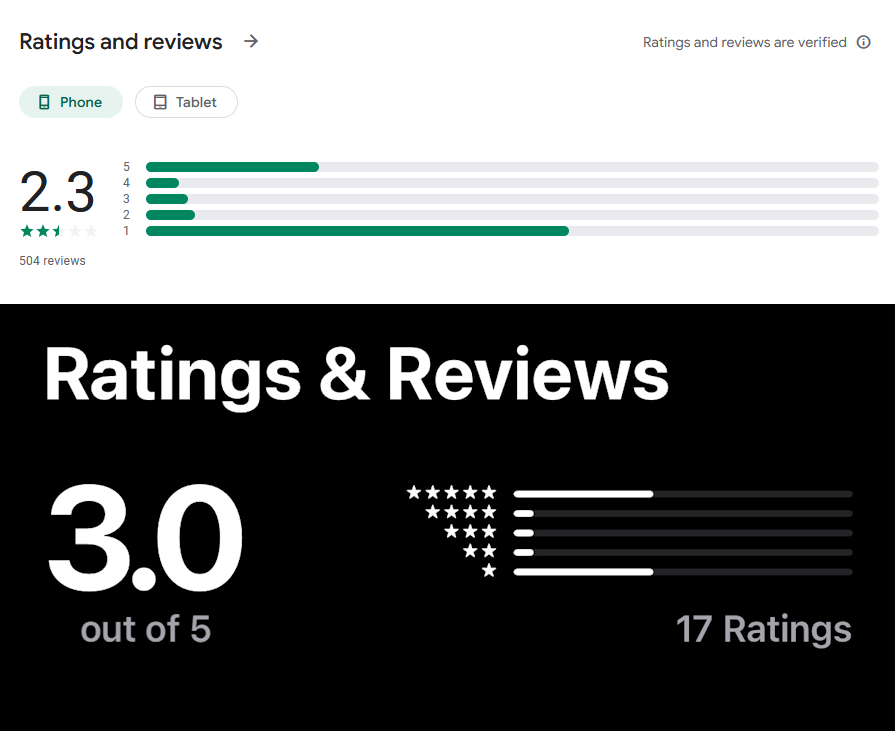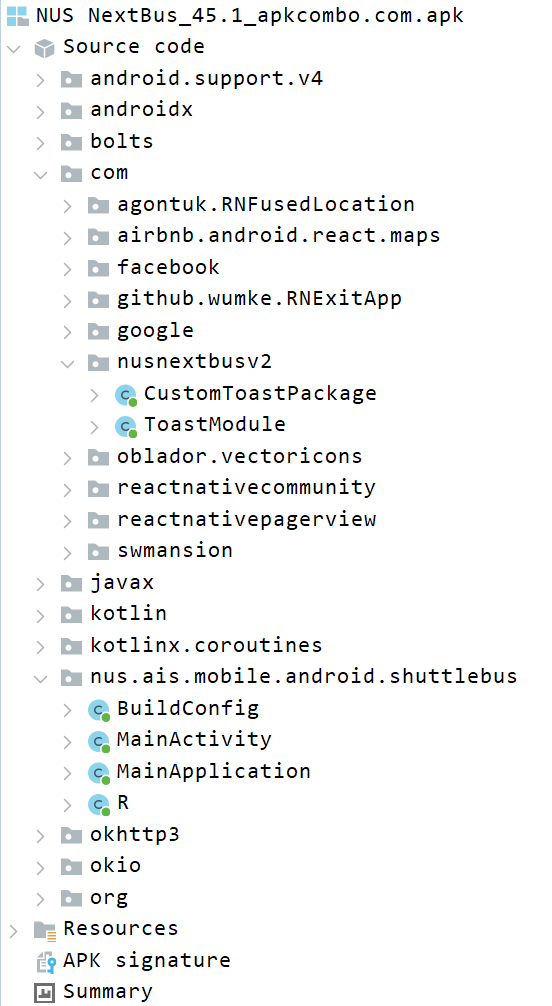I Don’t Like The NUS NextBus App So I Did Something About It
introduction#
NUS is a big1 university. Fortunately, there is an internal shuttle bus service that ferries students2 to and fro differnet locations, along with a handy app (the titular NUS NextBus) that displays bus routes and arrival timings.
Unfortunately, this app doesn’t seem to be very good.3

Recently, after being fed up with Google Maps not being able to display bus routes, I found a pretty cool website that not only shows all public bus stops and routes in Singapore, but also has a nice UI. So I thought, “hey wouldnt it be cool if i made something like this but for nus buses”, and got to work.
ok now the actual content#
First I needed an API for NUS ISB timings, however after a cursory search it quickly became evident that there is no public API documentation available.4 Truly unfortunate, but that won’t stop me. I did what any sensible person would do, and decided to reverse engineer the app, to find out where it was getting its information from.5
As I am an iPhone user, I first considered reversing the iOS version of the app, but it seems that it is not yet possible to jailbreak devices running iOS 16.6 and up, so I ended up having to use the Android version. I grabbed the package name from Play Store, put it into a (somewhat shady) website to download the APK, and now everything’s ready.
(Just in case you don’t know what an APK is: APK (Android PacKage) is a file format used primarily to install apps. It contains all the necessary code and resources to run an app, and is kind of like an exe for Android.)
I’m using jadx, a pretty good APK decompiler. After loading in the APK, we can look at the structure of the source code directories.

We’ll first look at the surreptitiously named nus.ais.mobile.android.shuttlebus, which is where the main code for the app should be stored. shuttlebus has MainActivity and MainApplication, which sound rather important.
(An application in Android is divided up into several activities, which is “a single, focused thing that the user can do”. To use an analogy, if an app was a play, an activity would be like a scene. MainActivity, like the name suggests, contains the code for the main activity, which is ran when the app is opened.)
However, MainActivity doesn’t seem to contain much either:
/* irrelevant code removed */
/* loaded from: classes2.dex */
public final class MainActivity extends ReactActivity {
@Override // com.facebook.react.ReactActivity
protected String getMainComponentName() {
return "nusnextbusv2";
}
@Override // com.facebook.react.ReactActivity
protected ReactActivityDelegate createReactActivityDelegate() {
SplashScreen.show(this);
return new DefaultReactActivityDelegate(this, getMainComponentName(), DefaultNewArchitectureEntryPoint.getFabricEnabled());
}
}
It turns out (as you might have guessed from the various type names, method names and comments) that this app is a React Native app6, and thus the source code is not contained within the decompiled Java files. Doing a quick Google search, I learn that all the JavaScript source code is bundled into a file called index.android.bundle. Sure enough, when I look into the resources folder, it’s there. Unfortunately, it appears to be obfuscated in some way.

No matter; I extracted out the file from the APK to work with it directly. Using the file command helps to identity what kind of file this is:
❯ file index.android.bundle
index.android.bundle: Hermes JavaScript bytecode, version 96
Turns out that the source code has been turned into bytecode for Hermes, a “JavaScript engine optimized for React Native”. I used hermes-dec to decompile this; unfortunately it’s not very good, but its still readable.
hbc-decompiler index.android.bundle index_decomp.js
Doing that gives us a giant 21MB file with close to 560 thousand lines of messy, (unintentionally) obfuscated JavaScript code. So I did the most sensible thing, and spent close to half a day scanning through it.
I found
- email addresses and passwords
- an
encode()function - coordinates of all bus stops
- list of points of interest
- closest bus stops to every point of interest
and more importantly
- the API URL
- list of endpoints and their parameters
I gave it a try, and…
❯ curl -X GET "https://nnextbus.nus.edu.sg/BusStops"
Unauthorized Access
Not entirely unexpected. Fortunately, it was relatively easy to find the correct credentials for authentication, and now finally…

It works!7
wait why didnt you just inspect the network traffic using an emulator or something#
Good question. I don’t know. If I had to give a reason it would probably be
- I don’t have Android Studio installed on this computer yet
- I don’t want to figure out how to inspect the network traffic
Also by decompiling the Hermes bytecode I found a lot more fun stuff, so it was worth it.
the end?#
yea thats it sorry
When I first started writing this a while ago (it’s December now time sure flies)8 I was planning to work on a web version of NextBus with a friend, but after exams the we both lost motivation, and everything kind of fell through.
I also contemplated adding a section where I explore the email accounts I found, but quickly realised that maybe it’s not a good idea to document my (somewhat) illegal actions. Getting my hands on a jailbroken iOS device is also… unfeasible for now so I couldn’t explore iOS decompilation either.
So that’s the end of this post. Thanks for reading?
citation needed ↩︎
unrelated but there was a brief period of time where they banned tourists from the buses, which is pretty funny to me ↩︎
personally ive never had any issues with it but i need a reason for doing this other than “im bored and i dont want to revise for my exams” soooooo ↩︎
this also makes me wonder who made the app; i cant find any info on the author other than “nus” ↩︎
no wonder why its so disliked ↩︎
credentials censored for obvious reasons ↩︎
im not joking when i said i wrote 90% of this post in one day then waited two months to write the last section ↩︎